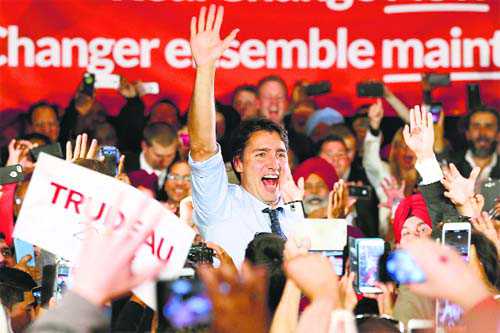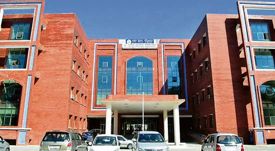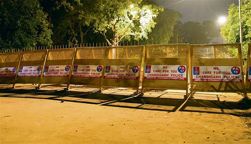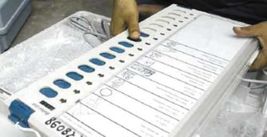
The Canadian PM elect, Justin Trudeau, believes in addressing the immigrants’ concerns.
Sarbjit Dhaliwal
What has added sparkle to the delight of the Indo-Canadians, especially Punjabis, who did exceedingly well in Canadian Federal elections, is that their Prime Minister designate, Justin Trudeau, can perform the bhangra on Punjabi beats with cheerful abandon. The Punjabis, wherever they are settled, went ga-ga over a video, which was released immediately after the Canadian election results, showing Justin Trudeau, clad in traditional white Punjabi kurta-pyjama and with a scarf around his neck, performing the bhangra ecstatically at a function in Montreal with other performers on the Hindi film song — Dil bole Hadipa, sung by Mika.
In Canada, there are so many “mini-Punjabs” and white politicians are often invited to various festivals celebrated by the Indo-Canadians. This video was recorded in 2009 at one such function.
Justin loves to get tattoos on his body and is fond of acting in serials and on the stage. One of the youngest politicians in the world to become a Prime Minister, Justin has taught French at the school level, worked as a bouncer in a nightclub and can even enter the boxing ring with gloves on. His charming persona had a mesmerising effect on the youth, who voted overwhelmingly for his party in the Federal elections. In fact, in the US, Canada and Europe, politicians at the top mingle with people to have fun. However, in India, status-conscious politicians prefer to behave like demi-gods and one can see signs of pomposity on their face at public functions.
There is a lot that we can learn from the just-concluded Federal elections in Canada about how a country should mature as a democracy. Canada appears to be the best example of this. Our backward-looking destructive agenda, manifesting at various levels, will take India nowhere. Only a more-inclusive India, free from all hatred is the way forward. Instead of attacking the civil liberties of fellow Indians, there should be a sustained effort to treat all on par to take the country to the next level of political and democratic maturity. That Canada has overcome its social stratification, can be judged from the fact that so many Indo-Canadians have won in the Federal elections. Indo-Canadians account for just 13 lakh in Canada. At least, one or two of the Indo-Canadian MPs will be a part of the Federal Cabinet to be announced by Trudeau on November 4 on his swearing-in. Among the frontrunners are Navdeep Bains, Harjit Sajjan, Sukh Dhaliwal, Anju Dhillon and Amarjit Sohi.
In 1971, Canada officially adopted the policy of multiculturalism. The architect of this policy was Justin Trudeau’s father Pierre Trudeau, who remained the Prime Minister of Canada for about 15 years, beginning in 1969 to 1984, except for a brief period in late 1970s. “Dignity for all living in Canada, regardless of their racial or ethnic origin, language or their religious affiliation was the main theme of the multiculturalism adopted as a policy”, according to Gursharan Buttar, a veteran journalist living in Canada for long. Under this policy people were allowed to keep their identity and to take pride in their ancestry. Just see how shabbily we continue to treat the poor sections of society, at the official as well as private level in India. Living with dignity is unthinkable for a vast section of people because no politician has tried to make all Indians equal partners in every sphere of life.
Canada’s multiculturalism policy allows people with roots in India full freedom to celebrate their festivals like Divali, Baisakhi,Holi, Durga Puja and the birth anniversaries of the Sikh gurus. They have the freedom to set up religious places and hold religious processions. White politicians, even to the level of the Prime Minister, take part in such festivals. Another major decision taken by Canada in 1982 was to enact a law known as the Charter of Rights and Freedoms. This Charter gave all Canadian citizens equal rights such as the right to vote, to contest elections and to hold public offices, regardless of the place of origin and birth. All those living in Canada, even if they were not citizens, were given all civil rights and civil liberties. Under this charter, no one can discriminate with anyone on the basis of one’s race, colour, religion and so on. This Charter marked the end of various kinds of troubles faced by the immigrants. As a result, most of them moved closer to the Liberal party led by Pierre Trudeau.
These two decisions facilitated immigrants movement ahead on the social ladder. They created political space for themselves and rose to the level of Federal ministers. Politics energises Punjabis and is one of their most-preferred vocations. A Punjabi immigrant, Ujjal Dosanjh, got the opportunity to become the Premier (Chief Minister) of British Columbia State in 2000-2001. This is unthinkable in a country like India.
India, on the contrary, is moving backwards. Instead becoming a stellar model of a multi-cultural society, the image being projected is that of country with an all-encompassing social disorder.
Though the main political parties, including the Conservative Party and the New Democratic Party, nominated Indo-Canadians, it was the Liberal Party that offered the maximum, (about 20), nominations to Indo-Canadians. They did not disappoint and most of them won the election. In all, as many as 22 candidates with roots in India have been elected to the Canadian House of Commons. Of these, 18 are of the Punjabi origin. They include Darshan Kang, Bob Saroya, Gagan Sikand, Kamal Khera, Randip Sarai, Sonia Sidhu and Rubi Sahota. Earlier, the maximum figure was 10 in 2008 and 8 in 2011.
Indo-Canadians have remained close to the Liberal Party, a Left-leaning party. Their association with the liberals began in the late 1970s, when the then Prime Minister Pierre Trudeau’s policies made life easy for immigrants. He provided opportunities for to them to feel safe and secure in Canada.
Justin Trudeau, even though he belongs to the fun-loving youthful generation, follows his father as far as ideological leanings go. Before launching the 78 -day-long election campaign, the longest in the history of Canada, Justin addressed the concerns of immigrants. They were upset over the two bills passed by the outgoing Stephen Harper Government.
One of these, Bill C-24, empowered the Canadian Government to revoke the citizenship of any immigrant having dual citizenship, convicted on the charge of terrorist or anti-Canada activity. The other was Bill C-51, which authorised the Government to arrest, without an arrest warrant, for a particular period anyone on suspected charges of terrorism. Justin has assured amendment of the Bill to dilute its draconian provisions and limit the police’s power to arrest without warrant.
On the Niqab issue, he supported its wearing during citizenship ceremonies. He stated that religion was a private affair of an individual and it should be duly recognised. Because of these promises, the Liberals got maximum support from immigrants. The Conservative party was opposed to the wearing of the Niqab by Muslim women at citizenship ceremony. Justin’s promise of a deficit budget and taxing the rich and lowering tax rates for the middle and lower middle class, paid off. The Conservatives and the NDP stood by the balance budget. Justin said he would borrow money, spend the same on infrastructure to create jobs and revive the economy, which is struggling due to the declining price of fuel. As Canada is the fifth-largest oil-producing country, its economy suffered because the oil price fell in the international market. It became unviable for Canadian companies to drill oil, thus leading the closure of operations at various places. This resulted in massive lay-offs and created a hue and cry on the employment front.























